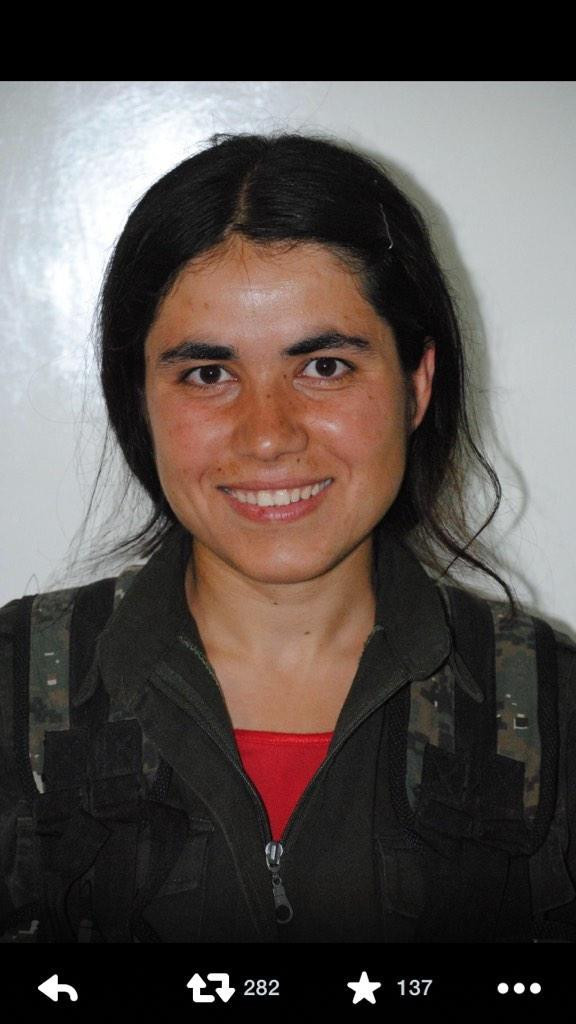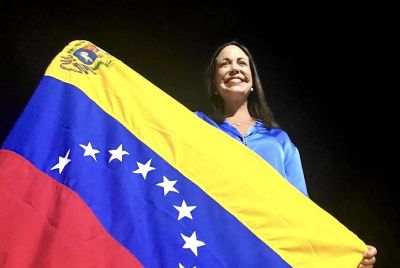Kobani: How strategy, sacrifice and heroism of Kurdish female fighters beat Isis

The liberation of Kobani by the YPG led forces after 134 days of fierce battling has created an enormous joy amongst the Kurds and around the globe. For many, Kobani represents the heroic resistance Kurdish men and women put up against Islamic State (IS). The city has also become the global symbol of the fight against this radical group that has spread worldwide fear.
Since the announcement of Kobani's liberation, there have been numerous articles about this significant victory for the YPG, and the female fighters of the YPJ, but very few of them really dug into the factors that brought this victory.
There is no doubt that YPG's removal of IS is also the outcome of a joint effort by the US-led coalition airstrikes, local Free Syrian Army (FSA) groups, volunteer youth groups from Turkey and the heavy weapons brought by the peshmergas.
However, none of these elements change the fact that the core achievement belongs to the YPG and YPJ fighters who have put up a very strong resistance on the ground that has impressed the entire world. So, how Kobani's male and female lions manage to defeat IS? What sort of tactics have they employed and what sort of weaknesses have they exploited?
Many YPG and YPJ commanders I spoke to during the beginning of the large IS offensive were pretty self-confident and predicted certain victory. Top YPG commander Polat Can and some others that I interviewed were certain that they would turn Kobani into a graveyard for IS. Indeed it seems like Kobani became a graveyard for IS as it lost 3,710 fighters, according to the numbers released by YPG last week. A significant portion of these fighters are veteran jihadists who have fought in Afghanistan and elsewhere.
The YPG Spokesman in Kobani, Shoresh Hasan, told me in a recent interview that 10 Chechen units, most of whom are highly skilled snipers, were destroyed in Kobani. Between six and seven Turkish units, and divisions from Afghanistan, Kazakhstan and Tajikistan, have also been destroyed. YPG sources say that, as far as they could identify, they killed IS fighters from 27 different countries.
Self-sacrifice
Of course YPG and YPJ commanders were not simply speaking with bravado, as they had long prepared for a tough urban warfare. Quickly withdrawing from the villages and positioning fighters inside the city was the main strategy of the YPG during this war. IS perhaps fell victim to complacency, interpreting this move as a sign of a YPG defeat, as did many major news channels by spreading news that Kobani had fallen into IS hands.
In reality, dragging IS into an urban war with which they were not familiar was a smart move as most of the YPG fighters are local people who know the city and its streets like the backs of their hands. Besides, unlike other cities IS attacked and seized, the people of Kobani are strong YPG supporters, and they carried weapons against IS alongside the YPG. Therefore, IS did not have sleeping cells that could carry out attacks and inside sources that could help them and provide coordinates of strategic locations and other important information.
Another important factor is that YPG and YPJ fighters are largely politically motivated individuals and they were ready to defend the city at all cost. The self-sacrificing act of the female commander, Arin Mirkan, is very well known. She decided to detonate an explosive, killing herself and a number of IS fighters before Mishtenur Hill was seized by her enemies. With this heroic action Mirkan was sending the message that she was not afraid of IS.

Last week Viyan Peyman, another YPJ commander, told me that Arin's action was a clear message to all of them that IS would have to walk over Kurdish corpses to capture Kobani. "Arin's epic action and sacrificing of other comrades was symbol of our resistance and a manifestation of spirit of resistance."
Considering the fact that the fear IS spreads among the masses was one of its major weapons, with such actions Kobani did not give this opportunity to IS. Statements from YPG and YPJ leaders were clearly defying this fear and senior commanders were declaring that they would defend Kobani until their last breath.
Because the YPG has been fighting IS for over two years in Kobani and other parts of Rojava, the Kurdish Syria commanders are well informed about the characteristics of IS fighters, their tactics and the weapons they have. That is the reason why, during the final stages of the battle, all IS attempts at suicide attacks and some 40 Vehicle Born Improvised Explosive Device (VBIED) failed.
The vast majority of these attacks were thwarted by the YPG before reaching their intended targets, depriving IS one of its most effective methods of overcoming their enemies. IS even tried digging underground tunnels to penetrate into the Kurdish line of defense but YPG successfully detected and eliminated this attempt too.
Whereas YPG and YPJ fighters were defending their own home that they were born and live in, Saudi, Chechen, Tunisian and Afghan IS fighters were in an unfamiliar city, fighting against the Kurds who were united against them. With the YPG using this reality smartly, large numbers of IS casualties were almost inevitable.
'You should spread everywhere, like fungi'
Furthermore, having veteran commanders on the field served as a moral boost for less experienced fighters who comprise the majority of the YPG fighter base. These experienced men and women, who are highly respected in society, provided some military advantage for the YPG which played determining role in the victory at the later stage of the battle. For example, the "hit and run" tactic employed by these veteran commanders inflicted heavy losses on IS. Local sources say that, especially during the operations against IS supply routes and liberating the strategically crucial Mishtenur Hill, this guerilla tactic was superbly used by the YPG.
Senior YPJ commander Meryem Kobani explained this tactic by saying that, if you attack the enemy forces whenever you get the opportunity, they won't be able to determine where the attack is coming from. "You should be everywhere; spread like fungi but should be also hiding. The enemy forces shouldn't be able catch up with you even when they reach the origin of the attack."
There is no doubt that the US-led coalition airstrikes have played a crucial role in destroying heavy IS weaponry and inflicting serious losses on the extremist group. However, it was the inspiring resistance of YPG and YPJ fighters, along with the pressure from American public and the media, that pushed Obama administration to launch airstrikes in support of Kobani's defenders.
Kobani's military and political leaders repeatedly stated that the victory in Kobani was the victory of the whole of humanity as the struggle waged there was the struggle of everybody who stood with Kobani. As the YPG chief commander in Kobani, Mahmud Berxwedan, said, the victory in Kobani has given huge moral support and a new spirit to everyone fighting for humanity.
Kobani has shown to everyone that IS can be defeated when there is a determined force on the ground. As a result of over four months of IS assaults, Kurds have gained the respect of the world with their fight while IS have been dealt a huge blow. Now, YPG and YPJ fighters, alongside Euphrates Volcano groups and the peshmergas, are continuing to liberate Kobani's villages. On the other hand, the local Kobani canton administration is starting its campaign to reconstruct Kobani which has largely been destroyed in the war.
The expectation of the Kobani officials is that the international community will step up for the very city that has fought on behalf of the world, and inspired millions and millions of its people.
Mutlu Civiroglu is a Washington, DC based Kurdish affairs analyst focusing on Syria and Turkey. He has closely been monitoring the YPG's fight against IS and other jihadists groups. You can follow him https://twitter.com/mutludc
© Copyright IBTimes 2025. All rights reserved.





















